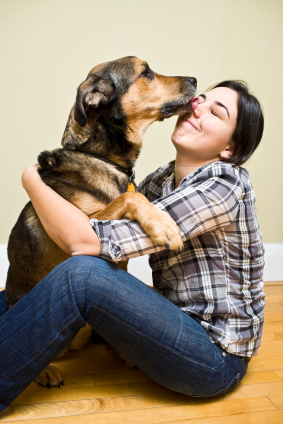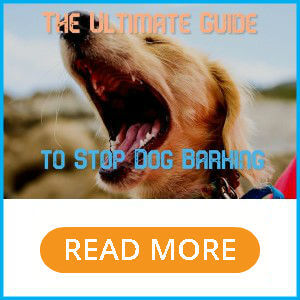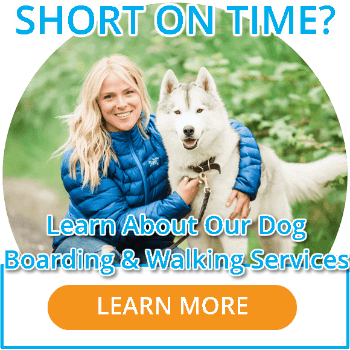In today’s times, everyone wants to be a better dog parent.
Just like some of us, you might have been googling “how to connect with your dog on a deeper level?”
If this is you, then you’ve stumbled on the right webpage, as today we’re going to provide you with some cool tips and tricks on how to connect to your dog on a deeper level.
Why build a connection with your dog?
Dogs are thoughtful and intelligent animals; as a dog owner, you can only reap these benefits by building a strong bond with your canine. A deep connection allows you to understand each other better, let your dog cheer you up, you be able to cheer your dog up, allow your dog to feel safe and trust you.
How do you get your dog to trust you?
Yep, you might have noticed that a bond is vital for your dog to trust you. But, the mythical and doubtful word a lot of you might be having in your mind right now is how?
The answer to this question is also the same as the one for a common question on “how do I get my dog to love me more?” To get your dog to love and trust you, you have to first put yourself in their shoes and understand from their perspective.
Try practicing staying calm, letting them have their space, approach them from the side and take them for walks. Doing this will certainly contribute to them trusting you in the long term, but don’t be frustrated if they don’t do this at first! Getting your dog to trust you can take time, practice, and a lot of consistency. You can expect anything from 2 weeks-2 months for this to happen.
How to bond with your dog
If you’re looking to bond with your dog on a deeper level, then you must provide them with a mixture of physical and mental stimulation and provide them with a lot of free time from you and contact. Here are a few ideas on how to do this over a 7 day period:
Day One: Add Some Doggy Zen Time
Turn the TV off, close your laptop, and put your cell phone away. Put away any and all things that might take your attention away from your dog. For 30 Minutes, sit in silent connection with your dog. You can place your hands on them and give a gentle pet or scratch, or you can just relax and sit beside them and allow their head to rest in your lap.
Enjoy the moments, listen to his calm breath, and watch her slowly drift off into the land of doggy slumber. Cherish the peace these moments bring to your life each and every day.
Keep in mind that this can be difficult for some dogs at first, but with practice, you will be able to teach your dog how to relax through this experience. Doggy Zen will bring you many enjoyable moments and become a very important tool to help relax your dog in new or stressful environments such as going to the vet or groomer.
If your dog is having a hard time with this practice for shorter lengths of time, apply gentle pressure to acupressure points used for calming such as the tips of the ears and the GV20 point on the top of the head and gradually lengthen the time spent in Doggy Zen as your dog becomes accustomed to the Zen time.
Day Two: Say Yes More and No Less
Imagine you get into a cab, but instead of telling the driver the address of the place you would like to go, you give him directions by telling him where not to go. You say, “driver, please don’t turn left here. Nope, this isn’t the way to go. Don’t go there! No, no, NO!” Does this sound absurd? Do you think you are ever going to get to your destination? Probably not before the driver gives up and tells you to get out of the car!
Traditional dog training is based on giving the answer “no” to your dog. “No, don’t pull on the leash.” “No, don’t stand there.” “No, don’t sniff that tree!” The result may be a dog that appears to be obedient, but in reality, the dog has just given up the way the imaginary cab driver did in the example above.
The term used to identify this condition is Learned Helplessness. In many cases Learned Helplessness is wrongly identified as ‘calm submission’ or ‘obedient when in reality, the dog in question has acquired learned helplessness due to their inability to determine the consequences of their behavior and have perceived an absence of control over the outcome of a situation.
In other words, the dog has just given up after receiving too many instances of non-contingent, punishing consequences. Free yourself from the anger and frustration that this type of incomplete communication brings to you and your dog by giving your dog “an address.”
Focus on telling her what you do want her to do instead of what you don’t want her to do. “Yes, I do want you to sit when I put your leash on to go for a walk.” “Yes, I do want you to lay on your mat when I am eating dinner.” “Yes, I do want you to walk beside me.” “Yes! I do want you to go pee outside! Good job!”
When you incorporate more “yes” into your day-to-day encounters, you will feel liberated and empowered by the results this answer brings to you. Learning clicker training is a wonderful way to introduce more “yes” and less “no” into your training routine with your dog. Visit the Karen Pryor Academy website to find a qualified clicker trainer in your region.
Day Three: Go For a Walk in a New Place
Are you tired of the same old scene? Your dog probably is, too! Get out there and explore the world together. Hit a new park or trail, go to a new dog-friendly shop or take your regular walk in a new neighbourhood. Socialization in its truest form relates to having a generally positive outlook on life.
The more positive experiences your dog has in life, the more socialized and prepared for life he will be. In addition, your dog will be better prepared to handle new unpredictable experiences since you have provided her with many instances to build up her confidence.
Day Four: Play a Game
Game playing is a wonderful way to get connected with your dog and improve your relationship with him. Games are a powerful tool in animal training programs that create a great positive association with you and offer your dog life rewards for performing appropriate behaviours. Visit a previous blog post, Canine Connection – 8 Fun Games to Play with Your Dog, for ideas on games to incorporate into your daily routine with your dog.
Day Five: Connect Through Touch
When a child falls and injures herself, the first thing a mother does is offer healing through touch. We have all experienced the comfort that touch can give in such ways as a hug after a bad day, a handshake to reunite friends, or a gentle caress to say, “I’m sorry.” Instead of mindless petting or scratching, exist in the moment with your dog and give them comfort through connected touch or massage.
Tellington TTouch is a “specialized approach to the care and training of our companion animals…” that uses an arrangement of TTouches that can relax your animal and bring harmony to your relationship. Please visit the official TTouch website for more information.
Day Six: Take a Nap Together
Dogs need sleep and a lot of it. Actually, it is quite normal for a dog to sleep up to 16 hours each day. I admit that I have a naptime for my dogs each afternoon to give them some quiet rest from our morning hike. But, there really is no better way to spend an afternoon than all snuggled up like a bug in a rug beside your furry friend.
Their soft breath in your ear, their quiet whimpers, and their feet gently running through dreamland as you drift away to find your own slumber will help your connection grow deeper than ever before.
Day Seven: Shape a New Behaviour
Shaping is a gradual and incremental teaching procedure that captures initial approximations towards a final goal behaviour. Once your dog performs a particular approximation regularly, you set a new criterion closer to the final goal behaviour and reward those attempts rather than the previously set criteria.
Shaping promotes a true partnership between humans and dogs since in order for the behaviour to be taught, the dog must be an equal participant in the process. Force and physical manipulation are never used, and the goal is not compliance but instead to empower the animal to make their own decisions based on a history of reinforcement of a particular behaviour.
Shaping through successive approximations encourages an experimental approach to problem solving and opens the dog up to learn the specific behaviors they are required to perform in order to earn further reinforcement.
Through shaping procedures, a dog learns how to manipulate their environment to earn reinforcement, experiments with how to problem solve, and is empowered to participate with their human through their own personal choice. As a result, the human-animal bond grows in trust and compassion.
In summary
If you’ve had your dog for a long time, you shouldn’t give up on it if you feel the trust might have diminished or not existed in the first place. Save money on investing in a dog trainer by practicing giving them more time with you. Remember to implement taking a nap together, taking them on more walks, add doggy zen time, increase playtime and more to strengthen your bond with your dog.
FAQS
How do you show your dog you are the alpha?
Dominance can be a difficult task between an adult and a dog. In fact, it’s sometimes a power struggle that’s not always predicted.
To make them know whose boss try taking your dog on a pack walk each day where they have to walk to the side or behind you. Also, make sure you eat your food before they do. One good way of doing this is putting a snack of your next to their bowl to show you are eating from their bowl. Often alphas always eat their food first.
Moreover, don’t always give in to your dog’s commands for attention and ignore them when they first come into the room. This indicates that you will give your dog attention according to your timing. Finally, try and stay above your dog at all times; if you lie below them, it will make you look like you’re submissive and they’re the alpha.
How long does it take for a dog to bond with new owners?
There’s no set rule as to how long it could take for a bond to a dog with new owners. The truth is it can totally depend on your dog’s temperament, breed, stories and your time with them. Typically puppies tend to bond quicker as they have fewer attachments and history with other owners than adult dogs.
On average, if you’ve got a puppy from a breeder, it could take 3 weeks- 3 months to bond with your dog. Whereas if you’ve got it from a rescue or is an adult dog it could take a lot longer; the key is consistency!
How do I say sorry to my dog?
If you feel like you’ve been that extra little bit harsh on your dog, then you should quickly change the tone of your voice to a soft and calming type. After all, your dog does not understand immediately that you’re trying to be empathetic with them.
The best way to show them that you’re sorry is by taking them out for walks, playing with them and giving them lots of attention. Doing this will let them know that they’re loved, and they will less likely be upset.





